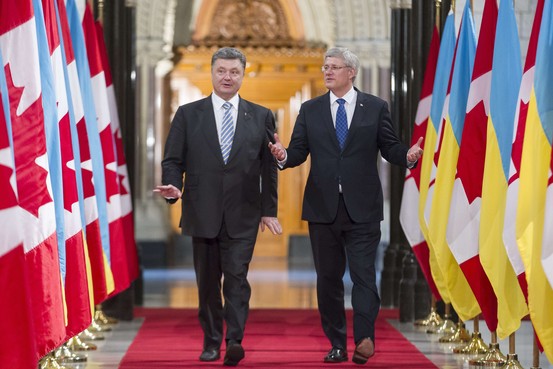Few others are more deserving of the title ‘Godfather of NATO’ than Dwight David Eisenhower. As the first ‘Supreme Allied Commander of Europe’ during the Second World War, he was instrumental in the push to continental liberation by 1945 – with the alliance he led, and the title he held, being taken by the North Atlantic Treaty Organization four years later. On this reputation, he was elected U.S. President in 1952 and sat at the apex of NATO during its infancy and heyday – spearheading its expansion and laying the groundwork for Cold War counter-Soviet defence. For the alliance, not many legacies loom as large.
Today, however, Ike is rarely remembered – save for one famous quip, perhaps his most eloquent presidential moment. In a valedictory speech from the Oval Office, on the eve of John F. Kennedy’s inauguration, Eisenhower told the nation: “We must guard against the acquisition of unwarranted influence, whether sought or unsought, by the military-industrial complex. The potential for the disastrous rise of [its] misplaced power exists, and will persist.”
For a nation distrusting of internal power centres, there came a new threat – the ‘military-industrial complex’ – i.e., a network of defence contractors at industrial scale who might, with their wealth, influence the U.S. Government in “misplaced” or “disastrous” ways. Ike never clarified what this meant, but plain inference would suggest these groups seek to manipulate the state into endless military action to maintain their profits, gained from the continuous sale of arms and equipment. As so many have written, “War is good for business.” Since Ike’s remark, the notion of this ‘complex’ has been rhetorically tossed about over the years – most recently, by progressive advocates for reducing military spending. Manifest notably in Bernie Sanders’ two presidential campaigns, these criers frequently invoke the gargantuan U.S. defence budget – for FY 2021, around USD 741 Billion – as proof of the complex’s existence, and use its nefarious connotations to call for diversions of spending towards domestic social projects.
Looking at raw numbers alone, one might be tempted to cede the case. The United States’ asymmetrically large defence budget, coupled with the profit margins of its defence contractors, certainly demonstrates that a small set of firms gain handsomely from high spending. Moreover, while appropriations in politics have always been acrimonious, the defence budget not only remains America’s largest discretionary spending item but also has increased over the last five years and is always voted upon in secret (appropriations indicate priorities, which provide cues to strategic rivals, hence the secrecy) – the basis for a possible carte blanche. Set in the context of Washington’s nebulous lobbying, and defence contractors’ heavy sums spent on it, as well as ‘revolving doors’ (Exhibit A: Lloyd Austin, current Defense Secretary and former Raytheon director), the circumstantial evidence seems mounting.
Respecting Ike’s legacy, however, the facts tell a story quite otherwise. In contemporary America, there is certainly an arms-manufacturing industry that has close relationships with the military. However, the idea that it forms a ‘complex’ nefariously pulling powerbrokers’ strings to keep their profits high is beguiling, at best – a myth better suited to conspiracy theories than the reality of government.
The ‘fact-checking’ begins with the economy. Unlike grocery stores or even simple goods manufacturing, with relatively low barriers to entry, new entrants to the defence industry face significant gestation before operability and profitability. Here, I write not of individual contractors – e.g., Silicon Valley firms selling niche products (e.g., VR headsets) – but of industrial contractors, who produce heavy equipment on a large scale (e.g., jets, missiles, trucks and armoured vehicles). To develop unique products, a supply chain and a large assembly process, the capital investment required is gargantuan, over and above what most start-ups would need to ‘scale’ their business. This comes with the abomination of regulations with which contractors must comply, given the national security sensitivity of their business. With these high difficulties, the quantity of firms is inherently limited, leading to certain names being frequently associated with weapons development (e.g., Lockheed Martin, General Dynamics, Raytheon and Boeing). It should be noted, however, that a wide plethora of defence contractors do exist – competing at multiple levels for tenders – most of which are unknown to everyday consumers. Nonetheless, the recurrence of a few large firms is due not to anti-competitive or ‘rigged’ systems, but more simply the hard economics underpinning the industry.
Coupled with this is the very structure of the market for military goods – which renders illogical the notion of private control over the government. If anything, the reverse is true, with the government controlling the sellers given its monopsonist market position (i.e., as a nation’s sole buyer of military goods). From this perch, it has the extraordinary ability to demand lower prices, tailor production to meet its standards and even restrict the entry of other buyers (by export controls on military hardware). The firms, dependent on government contracts to survive, thus take their cues from the state rather than the other way around. Though visible cooperation is often considered ‘insider’ access, this stems from the need to ensure purchases meet specific requirements, which demands involvement in development processes. After all, buying a warship is quite different from buying clothes, where ‘one size’ doesn’t fit all. Hence, rather than an absence of government control, the industry faces an extraordinary amount of it – which most other sectors would be loathed to accept.
As for high defence budgets, their causes are far less insidious than the supposed ‘tentacles in Congress’ that the notion assumes. Machiavelli wrote that “where there are good laws, there must be good arms.” In both the foreign and domestic realm, high military spending is hence an essential tool for all policy – strengthening the state’s hand to govern with the potential for violent force it promises. Economically, a robust military capacity is essential to protecting maritime navigation for global trade and domestic employment through arms production. With $53 Billion in taxes paid and over 2.2 million jobs supported – at a high average salary of $102,900 in 2019 – the American defence industry’s economic footprint is massive, comprising 1.8% of total GDP. For all their hostility to the industry, voters and officials nonetheless clamour for defence projects in their districts/states to sustain the bottom lines of jobs and growth.
Politically, such capacity enables effectiveness in foreign relations and the pursuit of core interests, as well as the enforcement of peace abroad. “Speak softly and carry a big stick, and you will go far,” remarked Teddy Roosevelt – at the height of the ‘Progressive Era,’ no less – on foreign relations. True to that sentiment, high spending arises not from a military-industrial conspiracy, but rather from the constant enlargement of ‘the stick’ to intimidate nations into compliance. One needs few counterfactuals to see its value. From countering piracy in Africa that harms livelihoods globally, to destroying ISIL’s Caliphate and protecting Taiwan from China, high spending has enabled a global military presence that upholds values and secures interests. Indeed, without such spending, NATO would likely be ineffective: the foundational ‘Article V’ being premised on the deterrence of U.S. military might. In all these cases, robust armed strength, through high spending, has checked violent actors by the permanent fear of destruction it fosters. Moreover, its global power projection provides strong diplomatic leverage, forcing foreign actors to choose negotiations over belligerence. For denuclearization processes in North Korea and Iran, for instance, it is the threat of U.S. military force, rather than naïve notions of liberal universalism, that compels these regimes to negotiate. From this assessment, large military spending has positive externalities and virtually underpins the rules-based international order. Nations, thus, have an incentive to keep spending high, confounding out the industry’s supposed influence.
In sum, Eisenhower’s portended disaster has not emerged. No nefarious ‘military-industrial complex’ exists. Military industries, though large and wealthy, do not control the levers of government to support the size of their profits; instead, they are merely one of the many large corporate lobbyists that vie for influence in the citadel of D.C. The notion is, thus, better relegated to the fringe than featuring in responsible discourse. Recognizing the complexity of geopolitics, and the value of the industry to defence (and NATO), we ought to not blow hot air into this ‘big lie,’ and instead let it crash down to Earth as willed by the gravity of truth.
Disclosure: While the NATO Association of Canada proudly counts defence industry partners among its sponsors, the author of this piece receives no financial compensation from them.
Any views or opinions expressed in articles are solely those of the authors and do not necessarily represent the views of the NATO Association of Canada.
Cover Image: A U.S. missile defence system during U.S.-Israeli military exercises (2018) by Jack Guez, Agence France-Presse via Axios. Open domain.




